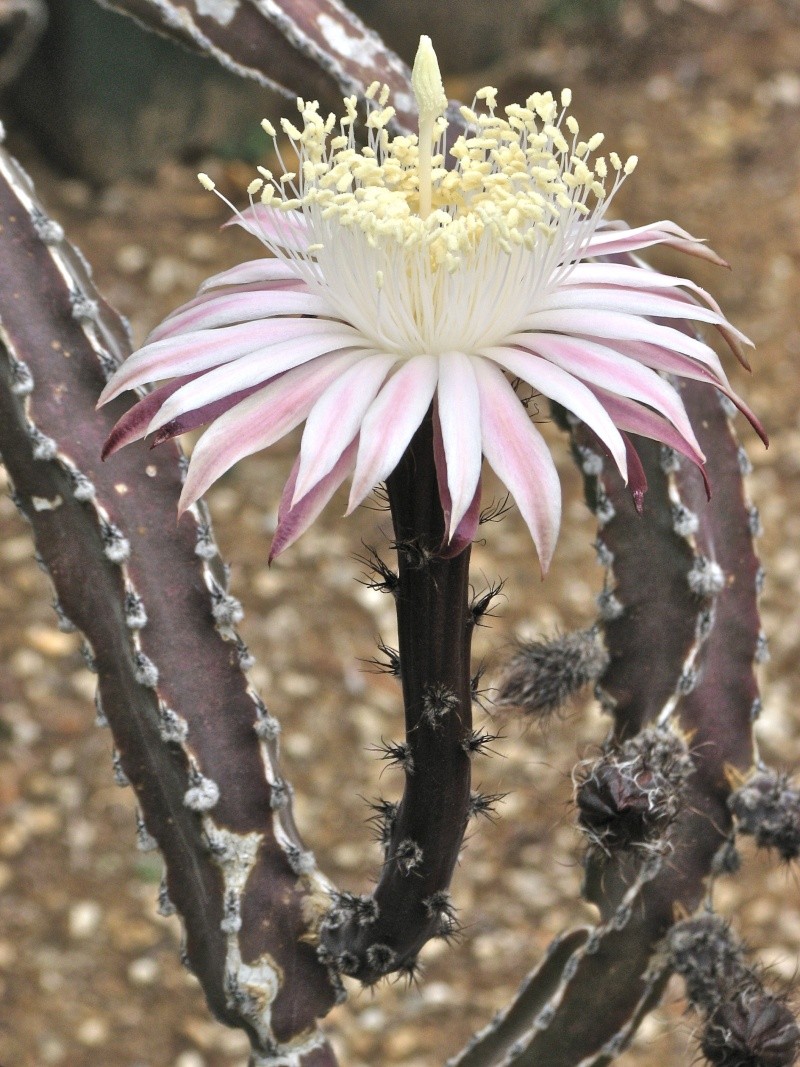The Peniocereus genus, a fascinating and unique section of the cactus family, showcases some of the most intriguing adaptations to arid environments. The species Peniocereus greggii ssp. greggii, commonly known as the night-blooming cereus, offers a microcosm of the remarkable resilience and beauty embedded within this botanical group. Have you ever wondered what makes this cactus extraordinary enough to bloom only at night? As we delve into the world of Peniocereus, we will unravel the complexities surrounding its growth, habitat, and cultivation, ultimately revealing a captivating plant that invites both admiration and challenge for enthusiasts.
The genus Peniocereus predominantly flourishes in the arid landscapes of Mexico and the southwestern United States. Characterized by their lengthy, elongated stems that can reach impressive lengths, these cacti epitomize adaptation. With a distinctive ribbed appearance and thorny spines that serve both protective and aesthetic roles, Peniocereus species add a palpable charm to xeriscapes. Let’s explore the distinctive traits of Peniocereus that place it within the spotlight of cactus enthusiasts.
Unveiling the Anatomy of Peniocereus
The morphology of Peniocereus cacti is particularly noteworthy. These plants often feature a singular or multiple upright, cylindrical stems that can grow up to several feet tall, with Peniocereus greggii ssp. greggii reaching heights of approximately six to seven feet under optimal conditions. The stems are accentuated with prominent, vertical ribs that serve to channel water more effectively and minimize surface area—a vital adaptation in water-scarce environments.
In terms of foliage, Peniocereus species showcase their spiny prowess with clusters of spines that emerge from areoles. While many cacti possess needles that primarily deter herbivores, these spines also play a role in capturing moisture from the air. Dew formed during cooler nights condenses on the spines, which then drips down into the plant’s roots, facilitating hydration. This remarkable interplay between anatomy and environment positions Peniocereus as a prime example of evolutionary ingenuity.
Night Blooming Wonders: The Floral Phenomenon
Perhaps the most enchanting aspect of Peniocereus greggii is its ethereal blossoms, which unfurl under the cover of night. These large, fragrant white flowers can span up to eight inches in diameter and emit a sweet, captivating fragrance that attracts nocturnal pollinators, such as moths. The bloom’s transient nature—lasting only a single night—adds an aura of mystery and allure.
The timing of these blooms is intricately tied to their environment and pollinators. By opening during the night, Peniocereus avoids competition with daytime floral species, promoting a niche ecosystem. Additionally, this flowering strategy demonstrates an evolutionary response to ensure that pollen is effectively transferred by nocturnal agents at a time when the moonlights the desert.
Ecosystem Interactions: More than Just a Plant
The interactions between Peniocereus and its surrounding ecosystem are profound. These cacti do not exist in isolation; rather, they play a crucial role in their habitat by supporting a myriad of wildlife. Birds, insects, and various mammals rely on Peniocereus as a food source. The fruits, which follow the blossoms, are not only a delectable treat for desert dwellers but also serve as a source of moisture.
Interestingly, Peniocereus contributes to soil health as well. Its shallow root systems stabilize the soil, preventing erosion and allowing for other flora to thrive in its vicinity. The organic material produced through the shedding of pads and flowers enriches the surrounding soil, fostering biodiversity.
Challenges in Cultivation: Are You Ready?
As an arid-adapted plant, Peniocereus doesn’t tolerate excess moisture well. Overwatering is a common pitfall that can lead to root rot—a vexing challenge for many. Is your garden prepared to handle the demands of this evening-blooming marvel?
Apart from watering concerns, pests and diseases can be a menace to Peniocereus. While resilient, these cacti are not immune to infestations, particularly from scale insects and mealybugs. Regular inspection and prompt management are critical to maintain the health of these eclectic plants.
Creating the Ideal Habitat
Replicating the natural habitat of Peniocereus is crucial for optimal growth. A well-draining mix, such as cactus soil combined with sand or perlite, is essential. Moreover, pots with drainage holes allow excess water to escape, fostering an environment for robust health.
Light is another significant factor in the care of Peniocereus. These cacti thrive in full sun; thus, a southern or western-facing window is ideal for indoor specimens. An outdoor garden should position them in areas that receive ample sunlight while protecting them from harsh winds.
Encouraging Blooming: Patience and Pruning
Although Peniocereus cacti require minimal care, fostering blooms specific to this genre necessitates patience and potential pruning. A well-maintained plant has the potential to produce striking flowers, so fostering a conducive environment must be prioritized.
Pruning may enhance growth and bloom production. Removing dead or unhealthy sections of the plant can invite new growth and energy, focusing the cactus’s resources toward reproductive efforts instead of maintaining damaged areas.
Is your heart set on witnessing the night-blooming marvel of Peniocereus? It is essential to evergreen your interest and adapt your care strategy to accommodate this unique plant’s quirks.
In Conclusion: A Journey Worth Pursuing
The exploration of Peniocereus is a rewarding endeavor that requires an appreciation for the challenges and beauty these cacti offer. The ability to thrive in harsh terrains, their captivating floral presentations, and their impact on the surrounding environment make them truly remarkable.
Whether you are an experienced succulent enthusiast or a beginner eager to add an extraordinary plant to your collection, embracing the nuances of caring for Peniocereus may unlock a journey filled with unexpected joys and challenges. Will you take the plunge and invite this enchanting cactus into your world?

Leave a Comment